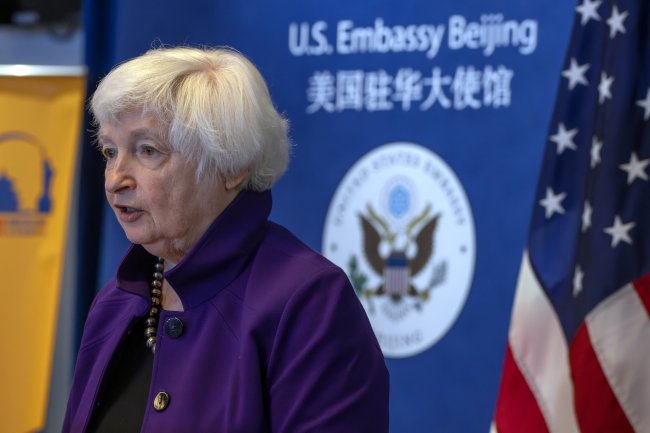Streaming Services’ Dilemma: How Quickly to Release Your Favorite Show
By Sarah Krouse and Nate Rattner May 2, 2023 5:30 am ET Ever since Netflix shook the entertainment world by releasing the entire first season of “House of Cards” in one fell swoop a decade ago, a debate has raged over whether that approach made any sense. Why, some wondered, would a streaming service pay top dollar for a show that users could consume in its entirety in a matter of days? Advocates of that approach, meanwhile, asked why streamers would stick to the weekly release format that defined legacy cable television when they had the flexibility to mix it up and give customers a more immediate payoff. The answer t

Ever since Netflix shook the entertainment world by releasing the entire first season of “House of Cards” in one fell swoop a decade ago, a debate has raged over whether that approach made any sense.
Why, some wondered, would a streaming service pay top dollar for a show that users could consume in its entirety in a matter of days? Advocates of that approach, meanwhile, asked why streamers would stick to the weekly release format that defined legacy cable television when they had the flexibility to mix it up and give customers a more immediate payoff.
The answer to the fundamental question of how best to release content, it turns out, is complicated.
“House of the Dragon” was last year’s most-watched streaming show, according to analytics provider Samba TV, and was released weekly on ’s HBO Max and the HBO TV channel. The second best, Netflix’s “Wednesday,” made all eight episodes available at the same time.

An analysis by Samba TV of last year’s 20 most-viewed original streaming programs in the U.S. for The Wall Street Journal shows that both approaches have merits and pitfalls. Viewers are more likely to watch the entire season of a show that was released all at once, but such shows tend to have a shorter shelf life than the ones released weekly.
The issue of how to release content is of particular importance now that streaming services are struggling to hold on to subscribers. Consumers increasingly hop on and off between services—which only require a monthly commitment—when they are done watching a specific show.
“Serial churning is really an existential threat that’s facing these streamers at this point,” said Evan Shapiro, a producer and adjunct media professor at Fordham University and New York University. That service-switching trend, which he called the streaming equivalent of changing channels on a TV, is forcing streamers to pay to reacquire the same customers, he said.

Netflix largely stuck with its binge-release model, despite suffering quarterly subscriber declines for the first time in over a decade last year and reporting more modest subscriber growth this year than before the pandemic.
“This enables viewers to lose themselves in stories they love,” the company said of the approach in a letter to investors late last year.
“It’s hard to imagine, for example, how a Korean title like ‘Squid Game’ would have become a mega hit globally without the momentum that came from people being able to binge it,” Netflix said in that letter. The show, a 2021 dystopian drama about down-on-their-luck adults risking their lives while playing traditional Korean children’s games on a secluded island, is Netflix’s most popular show ever.
More than 90% of original shows released last year on Netflix had the entire season made available on a single date, a significantly higher share than any of its streaming rivals, Ampere Analysis data show.

Netflix says ‘Squid Game’ is its most popular show ever.
Photo: Netflix
Netflix had 10 of the 20 most-watched streaming shows last year, according to Samba TV, which collects data on what people watch on their smart TVs. Of these, seven were released all at once; the other three were split in two separate installments—a hybrid strategy that the company has been embracing lately for some of its buzzy programs (in this case, season four of “Stranger Things,” the fourth and final season of “Ozark” and the docuseries “Harry & Meghan.”)
Netflix initially explored releasing seasons in two parts during the pandemic, co-Chief Executive Ted Sarandos said last year, primarily as a workaround to Covid-19-related delays. The company found that fans liked the approach, he said.

Of the 10 non-Netflix shows on the top-20 list, two were released in bulk, and the other eight were weekly, Samba TV found. The most-watched shows came from a variety of platforms including HBO Max,
’s
Paramount+,
’s
Prime Video and
Releasing a season in bulk makes it more likely people will watch it in its entirety, Samba TV found. To measure the completion rate of shows released in different ways, it calculated the share of viewers who watched the premiere and finale episode within 50 days of their respective releases. “Reacher,” Prime Video’s adaptation of Lee Child’s “Jack Reacher” novels, had a completion rate of 58%, Samba TV found, as did Netflix’s “Virgin River,” which was also released in bulk. On the other hand, only one show released weekly—“The White Lotus,” an HBO comedy-drama about the guests and staff of a fictional resort—had a completion rate of more than 50%. The trade off, Samba TV found, is that binge-model shows tend to fizzle more quickly than their weekly counterparts. To capture the degree to which shows built audiences over time, Samba TV measured the growth between the number of people who watched the premiere episode within 50 days of its release and those who watched any episodes within 103 days of a show’s release. For “Tulsa King,” a Paramount+ mob drama series starring Sylvester Stallone, more than four times as many households watched episodes in the full 103 days than watched the premiere in the first 50—a sign that its overall audience grew significantly as the weekly show went along. Among bulk-release shows, the best performer by that metric was Prime Video’s “Reacher,” whose viewership bump was 61%. “It’s a battle to figure out how you get discovered and get people to watch the entire season,” said
Ashwin Navin,
co-founder and chief executive of Samba TV. Samba TV relied on a 103-day period in its analysis to capture viewing of each episode of shows released at different cadences with varying numbers of episodes in a like-for-like way. Samba TV’s data only covers smart TVs, not mobile phones, iPads and other screens where viewers might tune in. It is drawn from a panel of three million households, counting a cumulative of five minutes of viewing as a watch. A scene from ‘Tulsa King,’ a Paramount+ mob drama series starring Sylvester Stallone. Photo: Paramount+ The two-part release approach occasionally used by Netflix emerged as a sweet spot, Samba TV found: It has a higher completion rate than weekly shows and more staying power than binge-model shows. Advocates of gradual releases say they keep audiences excited for new episodes and ensure customers stay with a service for many weeks to catch the entirety of a season. The approach also builds more buzz for a show, as people discuss with anticipation what may happen next, in turn drawing in fresh audiences. Do you prefer to watch shows that release one episode a week or all at once? Join the conversation below. The latest—and final—season of HBO’s “Succession,” a satirical comedy-drama about the family of a fictional media mogul, is a case in point: Social media goes ablaze every Sunday night when a new episode is released, making it difficult for people who don’t watch it almost immediately to avoid spoilers. Write to Sarah Krouse at [email protected] and Nate Rattner at [email protected]
SHARE YOUR THOUGHTS
What's Your Reaction?














